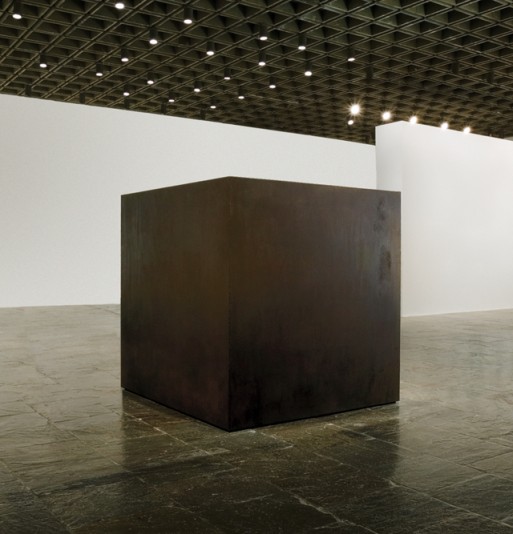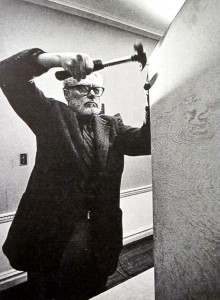The minimalist sculpture “Die” by American sculptor, Tony Smith (1912 – 1980), has ostensibly little to do with the subject of death and dying. Apart from the fact that the title elicits some kind of relationship with death, the relevance of the sculpture’s form to its subject matter seems enigmatic.
Tony Smith was one of the pioneering figures of Minimalism in the United States. Smith grew up in New Jersey with his family, the owners of a waterworks manufacturing company. Even as a child, he was surrounded by industrial materials – a reality that might have influenced his decision to work with metal and other industrial materials in his art career.
But Smith also suffered from tuberculosis in his youth. He was consequentially pulled from school and dropped into a bubble of social isolation for the sake of his health. While he was ill, Smith visited his family’s factory as often as possible; he was in constant awe of the machinery.
The sculpture “Die” is a reflection of the Smith’s intimate, life-long relationship with industrial materials. “Die” is six feet tall, deep and wide, constructed of steel and given up to a deep, almost rusted shade of brown. “Smith was concerned with deeper notions of measurement,” explains Art Critic Richard Kalina. Smith has taken the symbolic relationship between death and the measurement of six feet – the traditional depth at which to be buried – and renders it powerfully visible in his piece.
“Smith has taken the symbolic relationship between death and the measurement of six feet – the traditional depth at which to be buried – and renders it powerfully visible in his piece.”
It is also said that the medicine Smith was given during his childhood illness came to him in small, cardboard boxes. “Die,” then, could reflect the proximity Smith may have felt with death at such a young age.
The specific message of “Die” in relation to death remains ambiguous. In fact, it’s unlikely that a single message exists. Death is itself an ambiguous topic –never easy to understand, often feared or avoided, but always present in our minds because of its inevitability. “Die” brings this fear and ambiguity to the forefront of our thoughts.
Through creating a physical representation of his experiences with death, Smith’s “Die” has the ability to jump-start our own thoughts on everything end-of-life related.
You May Like:
- Alex Grey’s Mystical Vision of Death
- Performance Artists on Mortality: “Edge” and “Near Death”
- The Memorial des Martyrs de la Deportation

 “Die” (1962) by Minimalist Tony Smith
“Die” (1962) by Minimalist Tony Smith




 How to Comfort A Dying Loved One
How to Comfort A Dying Loved One
 Our Annual Seven Holiday Gifts for Someone Who Is Grieving, 2024 Edition
Our Annual Seven Holiday Gifts for Someone Who Is Grieving, 2024 Edition
 “The Funeral” by Matt James
“The Funeral” by Matt James














